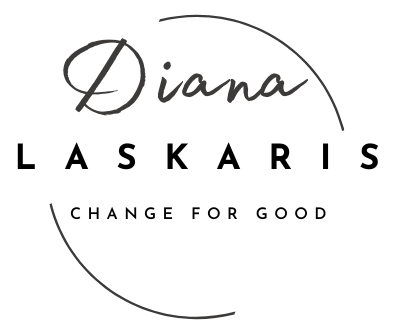When you find yourself behaving, responding, or doing things in an unwanted way even though you know that is not in your best interest, you may be acting on subconscious programming. I get asked a lot by people who have been trying to change unwanted behaviors for years, often unsuccessfully, how they can get at those hidden programs and change them. I thought it would be helpful then to answer the question, “What is the best way to reprogram the subconscious?”
There are different ways to “reprogram” the subconscious. But before we get to that, let’s try to understand how we get programmed in the first place
First, there are 3 “parts” of your mind. The conscious mind, which can handle only about 7-9 threads of information at a time. If you’ve ever gotten up from your seat, walked into another room to do or get something only to have forgotten why you were there, it could be that you just hit information thread number 10, leaving you in the quandary.
Then there is the unconscious mind, which manages the aspects of your functioning that you just don’t think about – breathing, for example.
And third is the subconscious mind, which manages trillions of bits of information, wherein lies most of our “programming” based on the experiences we’ve had and our responses to them, which become conditioned over time. This is of course a massive simplification, but at least I hope points out the differences.
Each part of our mind has a protective function. Our conscious mind filters out things through analysis and logic. Our unconscious mind responds to threats like the automatic blinking of your eyes when they are dry and need to be re-moistened. And our subconscious, no matter how much it makes us unhappy, figures out ways to “protect” us based on what it thinks, based on our experience, that we want and need – often counter to what our conscious mind thinks. We might look at the conscious as the “thinking mind” and the subconscious as the “feeling mind.
For example, if when we were young, we were told over and over again by the people that we looked up to most, like a parent, that we are never going to succeed so we might as well not try, then we might come to believe them and develop a subconscious script that wants to protect us from failure. This may translate into an inability to finish projects, push ourselves to try for a promotion or a sport, or ask that special someone out on a date later in life.
It’s not that we consciously think we will fail. In fact, we would like very much to succeed. But our subconscious “programming” makes us believe that we won’t and it wants to protect us from getting hurt. This translates into us not taking the risks that will propel us to success.
In order to change that program, we need to access that subconscious in a way that allows us to insert new messages that align with our actual desires. That way our subconscious understands how to protect us and do what’s best for us in a different way than our previous messaging provided. A great way to do that is through hypnosis.
Please know that hypnosis is quite a natural process that most people experience spontaneously on their own. Ever been driving in a car sort of on “autopilot” and miraculously ending up at your destination without actually being aware of making each turn on the trip? Or “zoning out” on a subway or bus but becoming alert just in time to get off at the right stop? Or been daydreaming or so focused on your work that you’re hardly aware of anything going on around you or the passage of a long period of time? These are essentially what it feels like to be in a hypnotic trance.
Importantly, hypnosis has been around and utilized for thousands of years, but it only became part of our modern vocabulary in 1842 when James Braid, a surgeon, used the term. Hypnosis comes from the Greek meaning sleep, but hypnosis is not actually a sleep state. The unfortunate name stuck and is a misnomer.
Some people are disappointed when they experience hypnosis that it is not some magical altered sleep state where they are made to do things they cannot imagine. Nevertheless, what can be achieved while in hypnosis may ultimately be magical – from losing weight, gaining confidence, or managing pain or stress to accelerating learning, quitting smoking, and much more.
Interestingly, while we do know that hypnosis works, we don’t actually know why. Thus, while we have ways we describe it, there is no uniform definition of hypnosis, at least not yet.
Additionally, there is no recorded case of any adverse “side-effect” from hypnosis. There has never been anyone “stuck” in hypnosis, nor are you compelled to do anything while in the hypnotic state that goes against your morals, ethics, or frankly, even your personality.
While some stage hypnotists use people who are very willing to bark like a dog or do the chicken dance, if this is not something you would normally be willing to do, neither will you do it under hypnosis. It is not brainwashing or mind control. It is a highly relaxed and focused state that allows you to bypass the critical conscious mind to make suggestions to the subconscious mind that can result in change, or “reprogramming.”
There are tremendous therapeutic applications for hypnosis as well as other “transformational technologies” such as Neurolinguistic Programming or Neuro-Associative Conditioning, Emotional Freedom Technique, The Sedona Method, The Release Technique, Access Conditioning, and many others that enable people to achieve personal development by getting rid of unhelpful or misplaced emotions, recalibrating the subconscious, and more.
On a conscious level, professional coaching is also useful. A good coach can ask you the right questions to help you discover the capacities you have within you to answer your own questions and achieve your own positive outcomes without even having to dig into your subconscious.
I am developing an integrated method to align the subconscious and conscious mind so they can work together. It is always easier to swim with the current than against it!
If you are looking to make some changes in your subconscious programming or other aspects of the way you live your life, check out my How It Works page for some ideas of how I might be able to help you find the best path for you.

